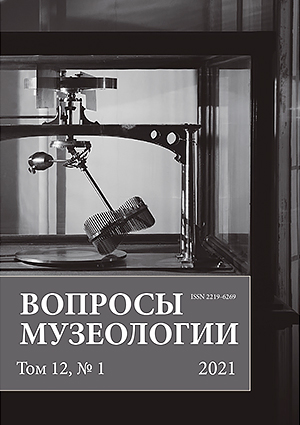Museums of the Soviet Belarus during the Khrushchev’s ‘Thaw’ (1953–1968)
DOI:
https://doi.org/10.21638/spbu27.2021.104Abstract
The historical perspective allows us to take a fresh look at a complex and contradictory period in the development of museum affairs in the USSR, which entered into historiography under the name of Khrushchev’s ‘thaw’. Using archival sources that are part of the Ministry of Culture of the Byelorussian SSR record, published statistical data, as well as periodicals, the article attempts to show the growth of the museum network in the BSSR and trace the process of its profile differentiation and museum branch development during this period. Using the specified source base, an analysis of state policy and public initiatives in the field of museum work was carried out. The public discussion of the early 1960s on the role of an artist in the process of museum display design is considered. While listing and analysing museum innovations during the ‘thaw’, the author pays special attention to the legalization of the activities of Belarusian private collectors. The emergence of museum architecture as a material embodiment of socio-cultural ideas about the museum is considered separately. The transformation of Belarusian museums into a subject of international relations in 1953–1968 is presented as an important new trend in their development. Appreciating the positive changes in the life of museums during the ‘thaw’ period, the author points out that it was in those years that the subordination of all activities of Belarusian museums to the tasks of glorifying Soviet society at the expense of other historical periods was finally established at the normative level. All areas of museum activities were filled with ideological content, which reflected the general cultural policy, invariably pursued by the party leadership. The article significantly expands the museological interpretation of the ‘thaw’ era and its role in the expansion, democratization, and professionalization of museum activities.
Keywords:
museum, Soviet Belarus, Communist party and state authorities, society, museum fund, display, branch, artist, collector
Downloads
References
Литература
References
Downloads
Published
How to Cite
Issue
Section
License
Articles of "The Issues of Museology" are open access distributed under the terms of the License Agreement with Saint Petersburg State University, which permits to the authors unrestricted distribution and self-archiving free of charge.




